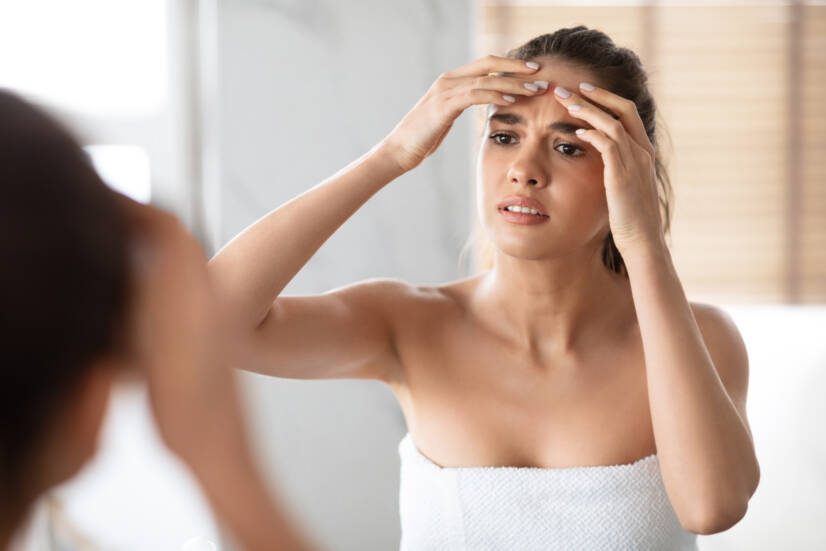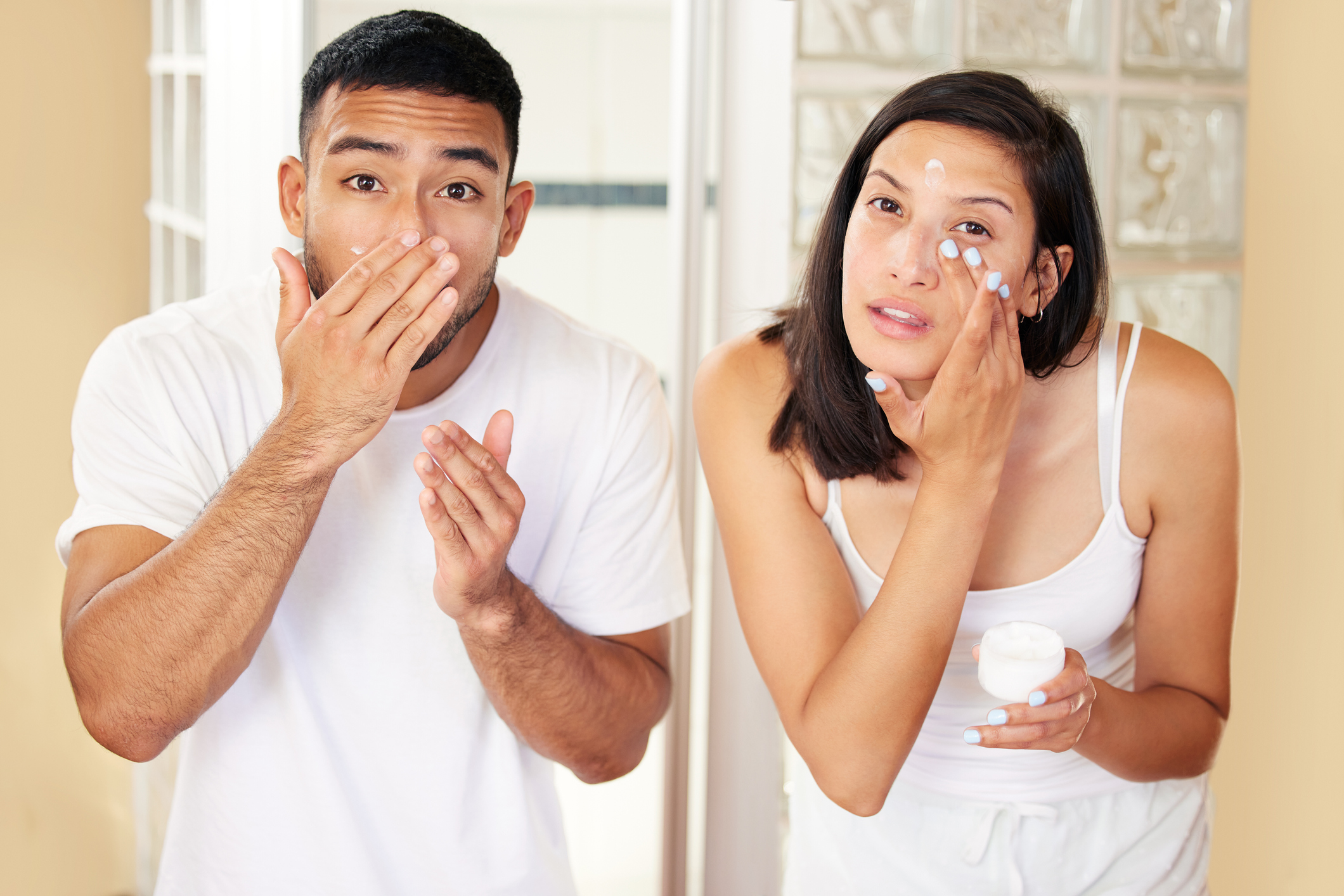- solen.sk - Diagnosis and treatment of acne and persistent myths, MUDr. Eva Rasochová, Dermatovenerology Clinic, University Hospital Bratislava, department Staré Mesto
- solen.sk - Acne vulgaris - clinical picture and therapeutic options, MUDr. Andrea Kozárová, PhD.
- solen.sk - Skin care and treatment of acne, doc. MUDr. Olga Vohradníková, CSc.
How should we care for problematic and oily skin? 3 main steps and tips for cosmetics

Nowadays, many people want to look flawless. Some are horrified to find a rash on their face.
Article content
- How should we take care of our skin?
- The test showed us that we have oily skin. How to take care of problematic skin?
- What cleansing soaps can we use?
- The first step of skin care
- Step two - watch out for impurities
- The third part is to purify...
- What is the difference between day and night cream?
- Covering creams
- Cleaning sponges and brushes that are used to apply makeup
- What rules should we follow when caring for problematic skin?
- Finally, let's dispel persistent myths about acne...
How should we take care of our skin?
Skin care products should be chosen according to your skin type.
In practice, the following test is used to determine skin type:
- Wash your skin with a gel or foam and pat it dry.
- Do not apply anything to your skin for one hour.
- Then we can determine what type of skin we have (how our skin feels).
Acne affects more than 85% of people. This is especially true between the ages of 11 and 33. It affects both sexes. However, women suffer from this condition more often than men.
In the following section, we will describe the characteristic features of different skin types.
- Normal skin - Not dry or oily.
- Dry skin - After drying the face, we feel tension around the mouth and on the forehead. The texture of the facial skin is rough, wrinkles are prominent, we can see scales and dry patches.
- Oily skin - The skin of the face is shiny. When we put a handkerchief on our face, we can see oily spots.
- Combination skin - We feel tingling around the mouth. The forehead, nose and chin are usually shiny (when we put a handkerchief to our face, we can see grease spots).
The test showed us that we have oily skin. How to take care of problematic skin?
First of all, we should focus on cleaning our skin. It doesn't take more than three minutes to clean our skin.
Many of us think that we can get rid of oily skin by cleansing frequently. However, the opposite is true. Frequent cleansing causes increased sebum production.
See also the following examples:
Cleansing the skin removes traces of dust, sebum, make-up and creams from the skin surface. The product should be applied on a cotton pad or cotton stick. It should be applied from the neck upwards.
Cleaning should be gentle to avoid rubbing impurities into the pores.
People who have problematic skin should avoid intensive washing with alkaline soaps. These dry out the skin.

What cleansing soaps can we use?
- Detoxifying facial soap for deep cleansing
The Detox Facial Deep Cleansing Soap contains:
- Natural Sea Buckthorn Oil - Improves skin elasticity, tones, softens and nourishes the skin.
- Schizandra nanai - Protects skin from negative external influences.
- Organic Sea Buckthorn Oil - Rich in vitamin E.
- Organic Siberian Mulberry Extract - Contains vitamin C, omega 3 and 6 unsaturated fatty acids. It has antioxidant properties, unifies skin tone and protects the skin from negative external influences.
- Blueberry oil - Unifies skin tone and increases skin elasticity.
- Natural raspberry seed oil - Has antibacterial effects.
- Sulfur soap with Dead Sea minerals
Sulfur soap with Dead Sea minerals cleanses acne-prone skin. Contains sulfur to help regulate sebum production, reduce breakouts and soothe inflamed skin. Removes oil. Leaves skin clean and naturally radiant.
Cleansing the skin on the face should be a daily ritual. In the morning, we should wash our face with lukewarm water. In no case with warm water. Warm water causes weakening of the protective film on the skin and loss of natural moisture.
In the evening, we should spend enough time cleansing our skin. Evening skin care consists of three steps:
The first step of skin care
- In the first step, we remove make-up from the face.
In the first step, make-up should be removed first. We should focus on the T-zone (forehead, nose and chin). This is the zone where most impurities settle. We should choose make-up removers according to our skin type.
Cleansing lotions, gels, lotions or wipes are available on the market.
Step two - watch out for impurities
- In the next step, we remove impurities from the skin. Cleansing gels are very popular. They are suitable for treating normal, combination or oily skin.
- Apply a small amount of cleansing gel to the skin.
- Massage in circular motions.
- Then rinse with water.
Examples of cleansing gels:
- Facial cleansing gel with nimbus
The facial cleansing gel is suitable for everyday use. It cleanses the skin of the face for everyday use and at the same time counteracts the formation of rashes. It removes excess oil and impurities from the skin. Unlike soap, the facial cleansing gel does not leave the skin dry and tight.
Nimba has antibacterial properties. It acts against bacteria that cause skin inflammation. Turmeric acts as an antiseptic.
- Cleansing foam gel with thermal water
Cleansing foaming gel with thermal water is designed for daily care of oily, acne-prone skin. It contains zinc, which reduces sebum production and cleanses the skin at the same time. The gel removes impurities from the skin and reduces the visibility of blackheads.
The third part is to purify...
- In the last step, we finish cleansing the skin with a facial toner. The facial toner removes residual dirt, oil and balances the pH of the skin.
If you have oily skin, avoid products that contain alcohol. This dries out the skin and subsequently promotes sebum production.
The result of an incorrectly chosen product is over-dried, flaky, irritated and very oily skin.
How about giving your skin a peel?
Exfoliation is considered the best way to remove dead skin cells. Exfoliation has many beneficial effects on the skin:
- it reduces excessive sebum production
- prevents clogging of pores
- regenerates the skin
- smoothes and brightens the skin
- improves blood circulation to the skin
Various peels are available on the market.
What is the difference between day and night cream?
Nowadays, we have many products available to treat problematic skin. Creams are an important part of skin care.
There are two types of creams...
1. Day creams
Day creams, unlike night creams, have a lighter consistency. They are quickly absorbed and are a good base for make-up application. They provide our skin with nourishment, hydration and protection from the sun's rays.

2. Night creams
Night creams are used to regenerate the skin during the night. Compared to day creams, they have a thicker texture. Night creams should be applied on thoroughly exfoliated and cleansed facial skin.
They should be applied at least 15 minutes before bedtime.
Night creams have many beneficial effects on our skin:
- they promote cell regeneration
- soothe the skin
- replenish antioxidant reserves
For many women and men alike, facial rashes are a serious aesthetic problem. Their psyche suffers too. Many are looking for a way to cover up skin imperfections. Concealer can be used for this.
Covering creams
Covering creams are available in two variants, namely AC-color cream (darker shade) and AC-color light cream (lighter shade). They are a useful aid in everyday concealment of skin imperfections.
Patients like them for their beneficial properties:
- choice of two shades
- easy spreading
- dries out rashes
- easy to remove
- do not burden the skin
- Reasonably priced
See also:
Cleaning sponges and brushes that are used to apply makeup
Many women use sponges and brushes to apply makeup on a daily basis. However, not many people realize that they also need to be taken care of regularly. Bacteria accumulate on their surface, which can cause inflammatory reactions on the skin.
For this reason, they should be cleaned at least once a month. Cleaning sponges and brushes only takes a few minutes. Just wash them with baby shampoo and leave them to dry overnight.
What rules should we follow when caring for problematic skin?
- You should wash your face with lukewarm water, not cold or hot water.
- Choose cosmetics that are non-comedogenic (do not clog pores).
- Use make-up that does not clog pores.
- Thoroughly cleanse your skin of make-up and impurities before going to bed.
- Do not over-cleanse your face. Excessive facial cleansing can cause acne to worsen.
- Do not squeeze out facial rashes.
- Regularly clean and replace the tools (brushes, sponges) you use to apply make-up.
Finally, let's dispel persistent myths about acne...
Myth: Acne is caused by poor hygiene
The first signs of acne are open comedones, which are visible to the naked eye as blackheads. These can falsely give the impression that they are full of dirt. Open comedones are filled with dead cells and melanin.
It follows that lack of hygiene is not the cause of acne.
Myth: Eating fatty foods causes acne
There is no direct link between eating fatty foods and the appearance of acne. So if you eat chips or bacon, it doesn't mean that you will get a rash on your face the next day. However, even when eating fatty foods, we must know moderation.
Myth: Acne is a contagious disease
There are 4 main factors that contribute to the development of acne: excessive sebum production, microbial colonization, hyperkeratosis and inflammation. This disease is not transmissible from person to person. So you don't need to worry.
Myth: If you have acne, you shouldn't use make-up
You can use medical makeup to cover pimples, which is part of acne treatment. However, this only applies to dermocosmetic corrective product that is designed to treat skin with skin disease.
Myth: Sunbathing gets rid of skin rashes
Tanning can give the skin an even appearance for a while. On tanned skin, rashes are not as visible. However, the drying effect of the sun's rays causes the skin to overproduce sebum after a holiday.
As a result, the pores become clogged. For this reason, sun exposure can cause sudden outbreaks of acne.
Read also:
Interesting resources
Related










